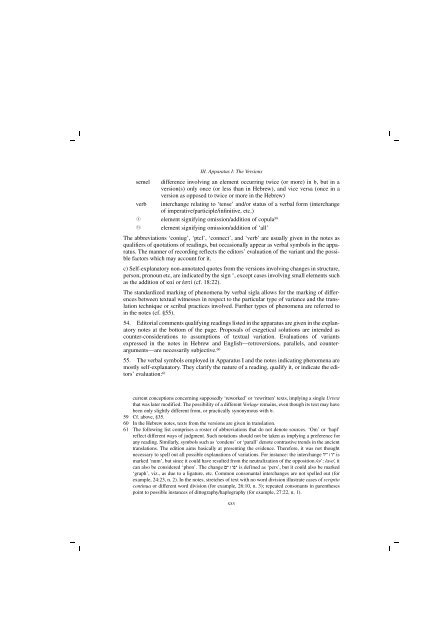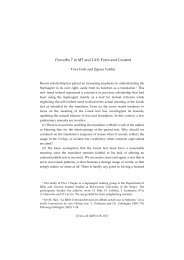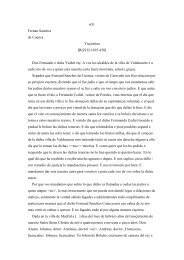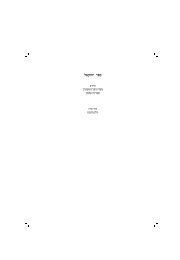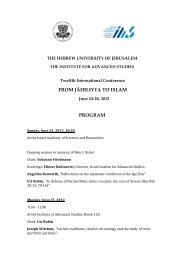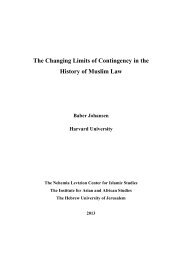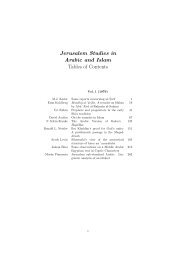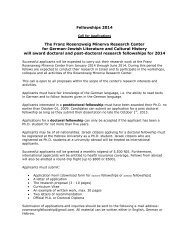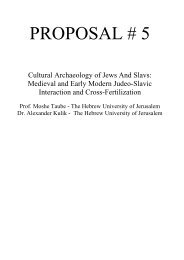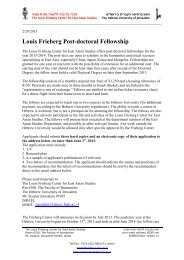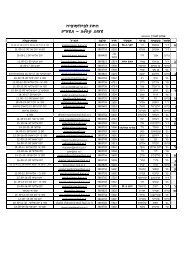THE BOOK OF EZEKIEL Moshe H. Goshen-Gottstein Shemaryahu ...
THE BOOK OF EZEKIEL Moshe H. Goshen-Gottstein Shemaryahu ...
THE BOOK OF EZEKIEL Moshe H. Goshen-Gottstein Shemaryahu ...
You also want an ePaper? Increase the reach of your titles
YUMPU automatically turns print PDFs into web optimized ePapers that Google loves.
III. Apparatus I: The Versions<br />
semel difference involving an element occurring twice (or more) in x, but in a<br />
version(s) only once (or less than in Hebrew), and vice versa (once in a<br />
version as opposed to twice or more in the Hebrew)<br />
verb interchange relating to ‘tense’ and/or status of a verbal form (interchange<br />
of imperative/participle/infinitive, etc.)<br />
& element signifying omission/addition of copula 59<br />
8 element signifying omission/addition of ‘all’<br />
The abbreviations ‘coniug’, ‘ptcl’, ‘connect’, and ‘verb’ are usually given in the notes as<br />
qualifiers of quotations of readings, but occasionally appear as verbal symbols in the apparatus.<br />
The manner of recording reflects the editors’ evaluation of the variant and the possible<br />
factors which may account for it.<br />
c) Self-explanatory non-annotated quotes from the versions involving changes in structure,<br />
person, pronoun etc, are indicated by the sign U, except cases involving small elements such<br />
as the addition of êáé ´ or åóôé ¢ ´ (cf. 18:22).<br />
The standardized marking of phenomena by verbal sigla allows for the marking of differences<br />
between textual witnesses in respect to the particular type of variance and the translation<br />
technique or scribal practices involved. Further types of phenomena are referred to<br />
in the notes (cf. §55).<br />
54. Editorial comments qualifying readings listed in the apparatus are given in the explanatory<br />
notes at the bottom of the page. Proposals of exegetical solutions are intended as<br />
counter-considerations to assumptions of textual variation. Evaluations of variants<br />
expressed in the notes in Hebrew and English—retroversions, parallels, and counterarguments—are<br />
necessarily subjective. 60<br />
55. The verbal symbols employed in Apparatus I and the notes indicating phenomena are<br />
mostly self-explanatory. They clarify the nature of a reading, qualify it, or indicate the editors’<br />
evaluation: 61<br />
current conceptions concerning supposedly ‘reworked’ or ‘rewritten’ texts, implying a single Urtext<br />
that was later modified. The possibility of a different Vorlage remains, even though its text may have<br />
been only slightly different from, or practically synonymous with x.<br />
59 Cf. above, §35.<br />
60 In the Hebrew notes, texts from the versions are given in translation.<br />
61 The following list comprises a roster of abbreviations that do not denote sources. ‘Om’ or ‘hapl’<br />
reflect different ways of judgment. Such notations should not be taken as implying a preference for<br />
any reading. Similarly, symbols such as ‘condens’ or ‘parall’ denote contrastive trends in the ancient<br />
translations. The edition aims basically at presenting the evidence. Therefore, it was not thought<br />
necessary to spell out all possible explanations of variations. For instance: the interchange eiÎ / eÎ is<br />
marked ‘num’, but since it could have resulted from the neutralization of the opposition /o/ : /aw/, it<br />
can also be considered ‘phon’. The change mÎ / epÎ is defined as ‘pers’, but it could also be marked<br />
‘graph’, viz., as due to a ligature, etc. Common consonantal interchanges are not spelled out (for<br />
example, 24:23, n. 2). In the notes, stretches of text with no word division illustrate cases of scriptio<br />
continua or different word division (for example, 26:10, n. 3); repeated consonants in parentheses<br />
point to possible instances of dittography/haplography (for example, 27:22, n. 1).<br />
xxv


